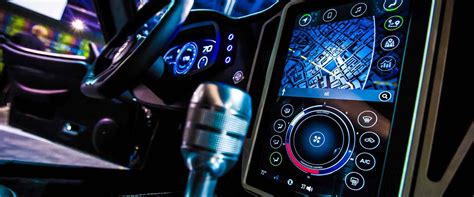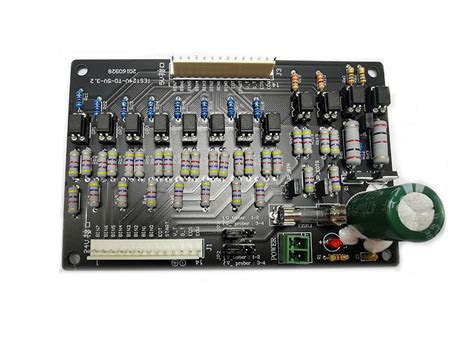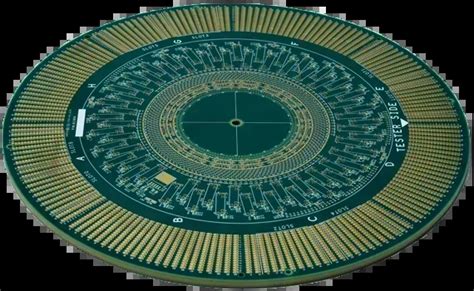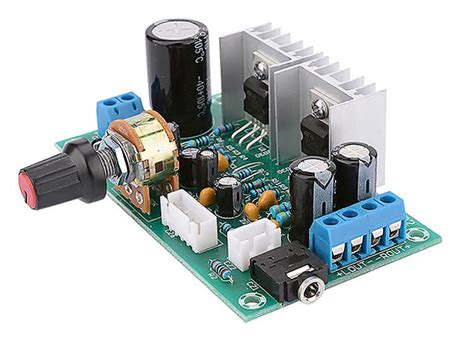Innovations in Automotive PCB Assembly for Enhanced Performance
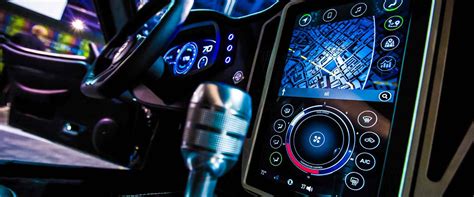
Key Takeaways
In the realm of automotive PCB assembly or PCBA, understanding the latest innovations is crucial for enhancing vehicle performance. Advanced materials and sophisticated design methodologies are not only improving reliability but also ensuring efficiency in modern vehicles. For instance, manufacturers are increasingly utilizing multi-layered boards that can accommodate complex circuits while minimizing size. This miniaturization is key in creating lighter vehicles that consume less energy without compromising on functionality.
Moreover, the role of automation cannot be overstated; automated assembly processes reduce human error and increase production speed, leading to a more streamlined workflow. Additionally, adhering to eco-friendly practices during manufacturing is gaining traction as sustainability becomes more paramount in the automotive industry.
Here’s a summary of key innovations shaping the future of automotive PCB assembly:
| Innovation | Description |
|---|---|
| Multi-layered Boards | Enhances circuit complexity while saving space |
| Automation Techniques | Reduces human error and speeds up production |
| Eco-friendly Materials | Utilizes sustainable resources for PCB production |
| Miniaturization | Supports lightweight vehicle design |
“Incorporating next-generation technologies in PCB assembly is not just beneficial; it’s essential for staying competitive.”
These technological evolutions are setting new standards in the industry, ensuring that vehicles not only meet current demands but are also future-ready with enhanced functionalities. By leveraging these advancements, manufacturers can significantly improve their product offerings, thus contributing to an overall elevation in automotive performance.

Overview of Automotive PCB Assembly Innovations
The landscape of automotive PCB assembly is undergoing remarkable transformations, driven by the relentless pursuit of enhanced performance and reliability in modern vehicles. With the influx of advanced technologies, recent innovations in PCB assembly are revolutionizing how electronic components are integrated within automobiles. This evolution includes the adoption of sophisticated Surface Mount Technology (SMT), which allows for the placement of miniaturized components on both sides of a circuit board, leading to smaller and more efficient designs. Furthermore, techniques such as flexible circuit design enable manufacturers to achieve intricate geometries that optimize space utilization within vehicles. The integration of the Internet of Things (IoT) also plays a significant role in advancing automotive PCBA, facilitating real-time data exchange and improving diagnostics and predictive maintenance capabilities. As a result, these innovations not only enhance the functionality of automotive systems but also contribute to overall vehicle safety and user experience. Ultimately, the continuous development in automotive PCB assembly processes is setting a new foundation for future automotive designs, ensuring that vehicles are equipped with cutting-edge technology while maintaining efficiency and reliability.
Key Technologies Transforming Automotive PCB Design
In the rapidly evolving landscape of automotive technology, pcb assembly processes play a crucial role in enhancing vehicle performance and functionality. At the forefront of this transformation are advanced pcba techniques that incorporate smart materials and flexible circuitry. These innovations allow for more compact designs while still maintaining high levels of performance and reliability. For instance, the integration of 3D printing technologies enables manufacturers to create intricate PCB layouts that were previously difficult to achieve, resulting in reduced weight and improved thermal management. Additionally, the adoption of high-frequency materials is enhancing signal integrity, which is essential for modern vehicles that rely on real-time data processing and communication systems. The incorporation of robust testing methodologies during the pcb assembly phase further ensures that each component meets stringent quality standards, thus boosting safety and reliability in automotive applications. Ultimately, these key technologies are redefining what is possible in automotive design, paving the way for the next generation of vehicles equipped with smarter, more efficient electronics.
Enhancing Reliability Through Advanced Assembly Techniques
In the realm of automotive PCB assembly, the pursuit of enhanced reliability is a key focal point that directly influences vehicle performance and safety. Recent innovations in PCB assembly methods have introduced a variety of advanced techniques aimed at improving the durability and functionality of electronic components embedded within modern vehicles. One such technique is the integration of automated optical inspection (AOI) systems, which are crucial for identifying defects during the PCBA process. This technology ensures that each solder joint and component placement is executed flawlessly, substantially reducing the risk of failure after deployment.
Additionally, employing surface mount technology (SMT) has allowed for denser component placement, which not only optimizes space within automotive designs but also minimizes potential failure points by reducing soldering errors. The use of advanced materials, such as high-temperature resistant substrates and lead-free solder options, further enhances the resilience of PCBs in harsh automotive environments. As vehicle electronic systems grow increasingly complex with the advent of electric vehicles and smart technologies, these advanced assembly techniques are indispensable in ensuring that automotive PCB assemblies maintain high reliability standards throughout their lifecycle. Ultimately, these innovations not only bolster performance but also play a pivotal role in shaping the future trajectory of automotive design, pushing boundaries in both efficiency and dependability while aligning with industry standards for safety and sustainability.
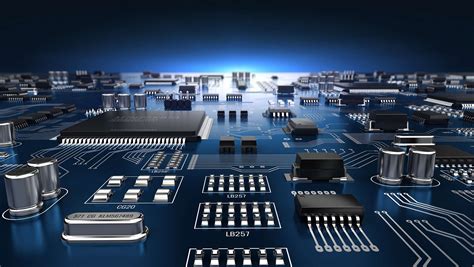
The Role of Automation in PCB Assembly Processes
The evolution of automotive PCB assembly is inextricably linked to advancements in automation. As demand for high-performance and reliable electronics in vehicles increases, the implementation of automated processes in PCB assembly (PCBA) has become vital. Automation enhances precision and efficiency, significantly reducing the risk of human error, which is crucial for meeting stringent automotive safety standards. Techniques such as automated optical inspection (AOI) and solder paste inspection utilize sophisticated imaging technology to ensure that each component is placed correctly and adheres to the required quality standards. Furthermore, robotic assembly systems have the ability to work tirelessly without fatigue, leading to increased production speeds that can keep pace with the rapidly evolving automotive market. Enhanced data analytics integrated with automation systems also enable real-time monitoring and adjustments during the assembly process, optimizing performance and minimizing waste. Overall, the role of automation in PCB assembly not only streamlines production but also significantly contributes to the reliability and longevity of automotive electronics, paving the way for innovations that propel the industry forward.
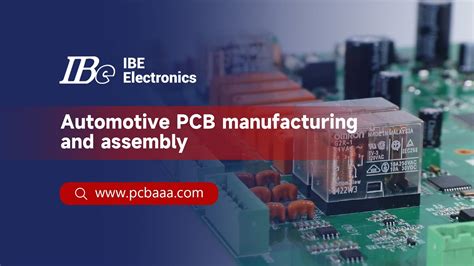
Impact of Miniaturization on Automotive Electronics
The trend towards miniaturization in automotive electronics is a pivotal factor influencing PCB assembly processes. As vehicles evolve to incorporate more advanced features, the demand for compact designs has surged, necessitating innovative pcba techniques that ensure high performance without compromising on reliability. Miniaturization enables manufacturers to reduce the size of printed circuit boards, which facilitates the integration of multiple functionalities within confined spaces. This transformation is not merely about downsizing; it also involves sophisticated designs that utilize multi-layer PCBs and embedded components, which enhance overall efficiency and reliability.
Moreover, advancements in materials and assembly techniques have played a crucial role in supporting this trend. For example, high-density interconnects (HDI) have emerged as a solution to create lightweight, yet robust assemblies that can withstand the demanding automotive environment. Such innovations allow for thinner designs while maintaining structural integrity during operation. The integration of surface mount technology (SMT) further contributes to reducing the footprint of automotive electronics.
As manufacturers continue to push boundaries in miniaturization, challenges related to heat dissipation and signal integrity must be addressed. Ensuring optimal thermal management in smaller pcba is essential for prolonged lifespan and performance enhancement under diverse conditions. Thus, the impact of miniaturization resonates throughout the entire process of automotive PCB assembly, driving both technological advancement and improved end-user experiences. Ultimately, these innovations not only redefine how vehicles are built but also shape the future landscape of automotive design as we know it.
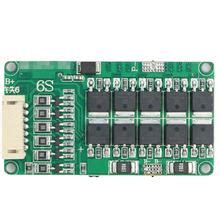
Eco-friendly Practices in Automotive PCB Manufacturing
The automotive industry is increasingly recognizing the significance of eco-friendly practices in pcb assembly and manufacturing processes. As vehicles become more sophisticated with advanced electronics, the demand for sustainable and environmentally responsible practices in pcba has risen. Manufacturers are now focusing on reducing waste and optimizing materials used in pcb assembly. For instance, many companies are turning to lead-free soldering techniques, which not only enhance the safety of the final product but also mitigate environmental risks associated with hazardous materials. Additionally, the incorporation of recyclable and biodegradable materials into automotive PCBs is a growing trend that showcases a commitment to sustainability. Implementing energy-efficient manufacturing processes further aids in decreasing carbon footprints during production. These steps not only contribute to an improved environmental impact but also appeal to a growing consumer base that values sustainability in their automotive choices. Ultimately, the adoption of these innovative practices in the realm of automotive PCB assembly not only ensures compliance with global regulations but also sets a new standard for performance and sustainability within the industry.

Future Trends in Automotive PCB Assembly Technologies
As the automotive industry continues to evolve, pcb assembly technologies are being refined to meet the demands of modern vehicle design. One of the most significant trends is the integration of advanced materials in the pcba process. These materials not only enhance durability but also contribute to weight reduction, which is critical for improving fuel efficiency in vehicles. Additionally, emerging methods such as flexible circuit designs are allowing for more compact and adaptable electronic assemblies, further optimizing space within vehicle components. The push towards smart vehicles is driving innovation in both software and hardware integration, where intelligent connectors and sensor technologies play a crucial role in ensuring seamless communication between various systems.
Another key trend is the growing emphasis on automation within assembly processes. Automated systems enhance efficiency and accuracy while reducing human error—important factors as vehicles become more complex with integrated electronics. Robotics and artificial intelligence are paving the way for faster production cycles and improved quality control in automotive pcb assembly lines.
Moreover, regulatory pressures for eco-friendly practices are influencing manufacturing methods. The shift towards sustainable materials and processes not only addresses legislative requirements but also meets consumer demand for greener vehicles. As companies strive to minimize their environmental footprint, practices such as lead-free soldering and recycling of electronic components are becoming standard.
In conclusion, the future of automotive pcb assembly technologies promises significant innovations that will not only enhance performance but also redefine efficiency and sustainability within automotive design space.
Conclusion
In conclusion, the field of automotive PCB assembly is undergoing a transformative phase marked by innovations that greatly enhance performance and reliability in modern vehicles. As highlighted throughout the article, advancements in pcba technologies are not merely incremental; they represent a significant leap towards achieving greater efficiency and longevity in automotive electronics. The integration of advanced assembly techniques, coupled with the increasing impact of automation, has streamlined the pcb assembly process, leading to more reliable and precise outcomes. Moreover, the trend of miniaturization has allowed for more compact designs, optimizing space while maintaining functionality. With eco-friendly practices taking center stage in manufacturing, the automotive industry is also making strides toward sustainability. Collectively, these factors paint a promising picture for the future of automotive PCB assembly, one where continuous innovations will undoubtedly shape the next generation of vehicles. As these technologies evolve, they will not only improve performance but also ensure that vehicles meet the growing demands for safety and efficiency in an ever-changing market.
FAQs
What is PCB assembly in automotive applications?
PCB assembly, or PCBA, in automotive applications refers to the process of creating circuits that control various functions of a vehicle. These can include everything from the engine management system to infotainment technology.
How do innovations in PCB assembly enhance vehicle performance?
Innovations in automotive PCB assembly lead to enhanced vehicle performance by improving the efficiency and reliability of electronic systems. Advanced materials and precision techniques allow for better heat dissipation, reducing the risk of component failure.
What advanced techniques are being used in automotive PCB assembly?
Advanced techniques such as robotic soldering, laser cutting, and automated optical inspection are significantly improving the accuracy and speed of pcb assembly, ensuring high-quality components that meet rigorous automotive standards.
How does automation impact PCB assembly processes?
Automation streamlines production in PCBA, reducing human error, increasing throughput, and ensuring consistent quality across large volumes of products, which is essential for modern automotive manufacturing.
What is the significance of miniaturization in automotive electronics?
Miniaturization allows for the integration of more functionalities into smaller spaces. This helps create lighter vehicles with improved fuel efficiency while enhancing design flexibility for advanced driver-assistance systems (ADAS).
Are there eco-friendly practices in PCB manufacturing?
Yes, many manufacturers are adopting eco-friendly practices such as using lead-free solder and recyclable materials. This not only aligns with global sustainability goals but also meets stringent regulations in automotive industries.

